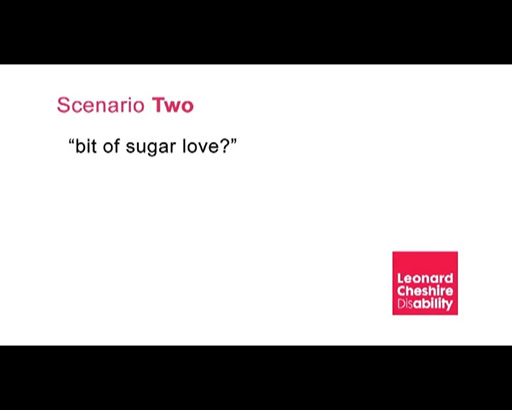1.2 How do things go wrong?
There are lots of ways in which things can go wrong with verbal communication. Listed below are just a few of them.
- Maybe the person doesn’t understand what you mean.
- They may misinterpret what you have said.
- They don’t hear correctly.
- You may have given too many instructions at once.
- You chose the wrong time or place to have a difficult conversation.
- The information may have been confusing.
- The other person may not speak the same language as you.
Have you ever had to deal with some of the situations shown in Figure 2?
Figure 2 How verbal communication can go wrong
We give messages we aren’t aware of with our body language, especially if the other person has limited understanding of the language being spoken. So you need to take extra care to choose the right time and place, and to give people time to process information. If you keep repeating things because someone with limited understanding hasn’t responded quickly, the process often has to start again.
In the next activity you will see how confusion can arise if our words do not always match the other messages we are giving with our body language and facial expressions.
Activity 5
Read the case study and then answer the questions that follow.
Case study: Rosie
Rosie lives in a supported living unit with five other people with learning disabilities. They are supported by a team of staff. Rosie is able to verbally communicate her needs and emotions clearly, but some staff see her as being very demanding and are not always happy to work with her.
Verbally the staff are always pleasant to Rosie, saying all the right things. But their non-verbal communication gives a different message. For example, Rosie asks for her third drink of the morning. Pam, who is trying to watch a programme on television, says ‘Yes, sure Rosie, coming right up’ but when she says it, she sighs and rolls her eyes. She brings back Rosie’s tea and smiles, puts it down muttering ‘What did your last slave die of?’ and walks away, without waiting for any further comment from Rosie.
- If you were Rosie, how would you feel about this incident, and why?
- If you were another member of the team, what would you say to Pam?
Comment
Rosie probably feels that Pam doesn’t like her very much because she has seen Pam’s facial expressions and heard her muttered comments. She is confused because Pam is still smiling and getting her what she asks for.
Another member of the team might speak to Pam because her treatment of Rosie is unfair. If Pam thinks Rosie is being demanding, Pam needs to discuss this with the rest of the team and they should agree on coping strategies for those staff who find Rosie difficult to deal with.
It is all too easy to get into bad habits when it comes to communicating, as the next activity will show you.
Activity 6
Look at the following video and think about the way these staff members are behaving, and how it could be done differently.

Transcript: Bit of sugar, love?
Bit of sugar, love?
- Write down three things you would do differently.
Comment
The staff are having a conversation over the cared-for person rather than involving him in the conversation. They are also not focusing on their task, which is to help him with his breakfast. They should have focused on ensuring that he was able to reach his drink. When supporting him with his food, the staff should ask how he prefers his food and wait for his response, and ensure that he is happy with the way the food is given to him.
You may want to take some time outside of this course to consider when your communication has been misunderstood, and what steps you could have taken to eliminate misunderstanding.






